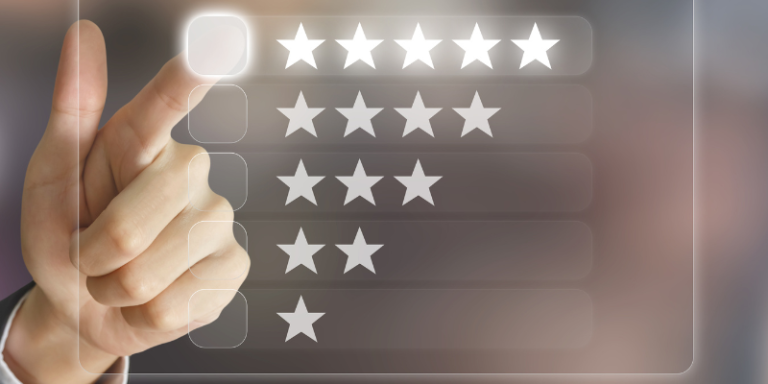I’ve been talking to a lot of people recently about the things they find most difficult about growing a business.
And finding the right price for their service is something that keeps coming up again and again and again.
It’s a real dilemma, and finding a way to define exactly what your price should be can feel like a minefield. So I thought I’d share some tips about the most common mistakes people make when setting their price. And I’ll give you a clue – most of these relate to being far too cheap rather than being too expensive!
1. Too cheap can’t be any good!
It’s easy to think that reducing your price will make you more appealing to more people, so it’s something many businesses do, especially when cash is a bit tight. But the problem is the perception this can create for your customer. We are programmed to think that if something seems too good to be true then it probably is.
It’s easy to think that you need to compete on price with the cheapest people in the marketplace but, honestly, that’s just a race to the bottom.
If you think about your own buying habits, when it’s something important then the chances are that you DON’T want to buy the cheapest, you WANT to buy the one that offers you the best value.
Customers love value!
The psychologists will tell you that, when given 3 different quotes, the vast majority of people will choose the middle one because that’s where the perception of value is highest.
So beware of pricing yourself too cheaply. It might just lose you business!
2. Discounting makes you a liar!
Firstly, let me clarify that there’s nothing wrong with asking a supplier whether they have any room to negotiate on price. It makes good business sense to keep an eye on what you’re spending, so don’t race to be offended if somebody else asks you whether you can do it a little cheaper.
The key is to be absolutely clear, in advance, about whether you have any room to move on price. You have to be crystal clear about your margins and the impact of any discount before you agree to anything though. It can seem incredibly easy just to knock off 10% as a gesture of goodwill, because you’re a nice person after all aren’t you?
The problem is that unless you’re certain of your margins that 10% discount could very easily be 25 to 50% of your total profit.
The other major pitfall with discounting is what it does to your integrity. Because there’s actually a strong possibility that if you offer somebody a 10% discount they might be pleased with the deal but they might also be left with a number of lingering questions. Questions like:
- why didn’t you give me your best price in the first place?
- did I actually get the best deal or should I have asked for a bigger discount?
- would the next person get the same price as me or would they get a different price?
The impact of all of these questions could create a seed of doubt in your customer’s mind about your integrity.
Look at it this way … if you think of some big brands you know that are constantly discounting, versus brands that you think rarely discount, what’s your view of the integrity of those two businesses? It’s different isn’t it!
So discounting might win you business in the short term but it’s unlikely to help you build strong long term relationships with people who come back to buy from you for years to come.
3. You should be too expensive for some people
The bare truth is that it doesn’t matter how much time you spend working on your pricing model, your presentation, your sales skills and everything that goes with that; some people will ALWAYS buy based solely on price.
I generally estimate that around 20% of people will buy whatever is cheapest regardless of quality, service, reliability etc.
That’s OK, it’s the way of the world, it’s something that will never change, so it’s not worth spending a huge amount of time worrying about. The key is to understand that because of this there are some people who you probably don’t actually want to be your customer.
The reason is that even if these people choose to buy from you this time, it doesn’t matter how amazing your product or service is, if they can get it cheaper somewhere else next time round then they’ll go elsewhere. They’re very unlikely to become loyal customers and there’s a strong chance that you’ll find yourself frustrated somewhere down the line when they make it clear that they don’t value your quality. How very dare they!
The nature of these people means that every so often, one of them SHOULD tell you that you’re too expensive and then go elsewhere for the cheap as chips deal.
So the crux of the matter is this: if nobody is ever telling you you’re too expensive then it actually means you’re far too cheap!
4. Like attracts like
One of the best sources of new customers for any business is referrals from your existing clients. When a customer recommends you it brings you instant credibility and trust so they’re usually the most likely prospects to turn into paying customers.
BUT, the time that becomes a problem is when you’ve won your existing clients because you gave them a rock bottom price. Because let’s be honest, those customers who come to you on price are also quite likely to pay a bit late, ask for a better deal half way through, ask for 46 amendments to everything and generally be a bit of a time stealer.
The last thing you want to happen is to find yourself with a lot of customers like that you who just keep bringing you more of the same!
So, there are my 4 top tips to help you look at your price more objectively and to make sure that you’re not underselling yourself.
If you still feel completely bamboozled by how much you should be charging send me a message and let me help you.






